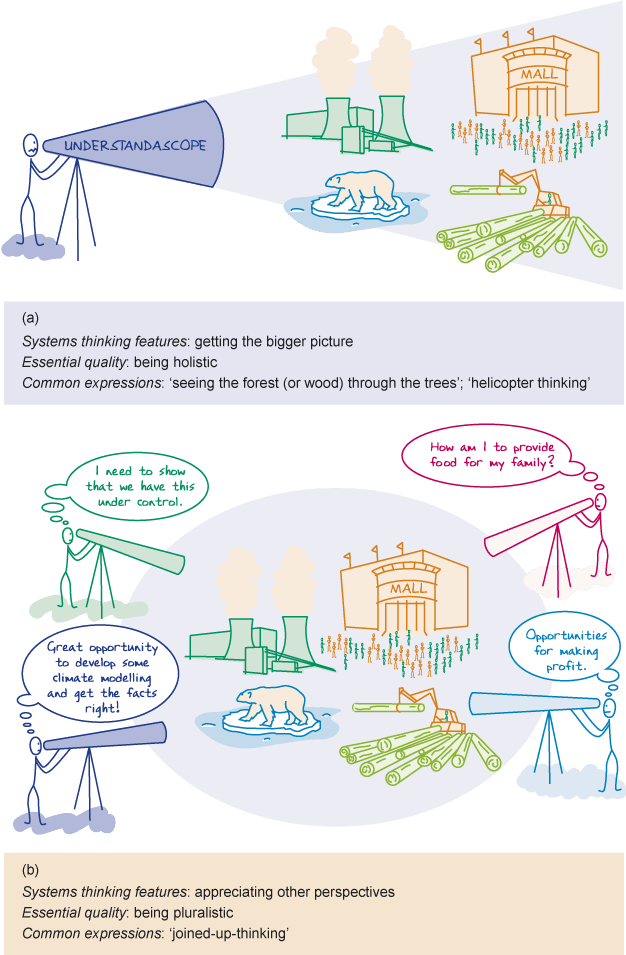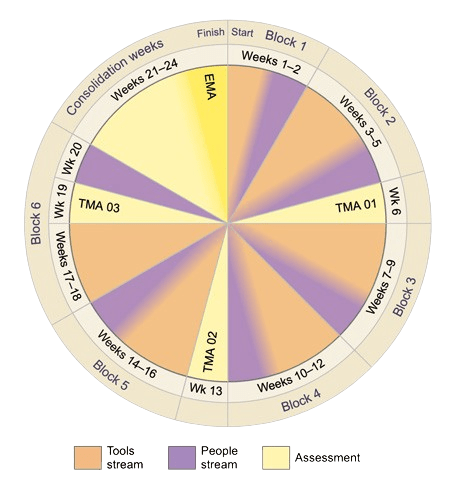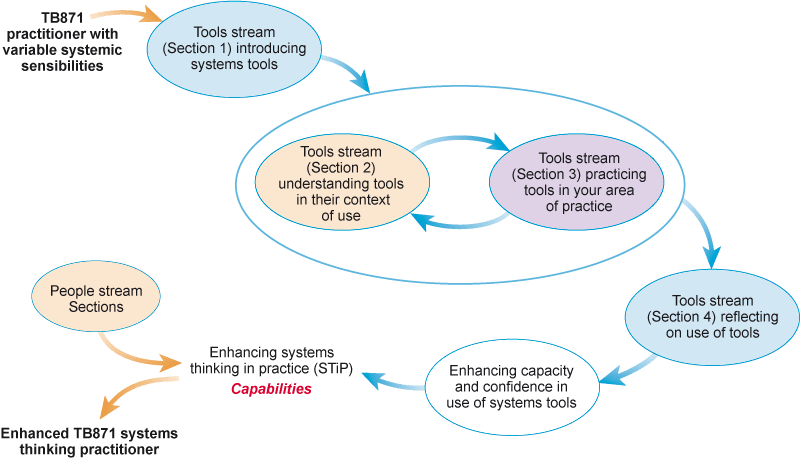TB871: Making strategy in difficult/messy situations
Note: this is a post reflecting on one of the modules of my MSc in Systems Thinking in Practice. You can see all of the related posts in this category.
Clear systems thinking is one of the basic literacies of the modern world, not least because it offers unexpected insights that are not amenable to common sense.
Mulgan (1997)
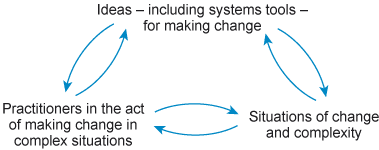
The above influence diagram, taken from the module materials, illustrates the influences between the three factors of any human endeavour to make strategy:
- Situation – comprising the arena of change and real-world complexities
- Practitioners – people effecting change in the situation
- Ideas – conceptual constructs developed by people for effecting change
I don’t usually find these kind of diagrams particularly useful, because it might as well be the bullet point list. You’re simply saying “take into account these things when doing X.” In this case, X is “making a strategy”.
Equally, I don’t find this kind of table particularly useful because it encourages the typologising of situations rather than understanding that everything is, and forever will be, on a spectrum:

To that end, I’ve created my own alternative. I’m not sure the background works, but I was attempting to show the ‘one to many’ nature through overlapping grey triangles. Ah well, creating it helped me understand this a bit more:

But what is the difference between a ‘difficulty’ and a ‘mess’?
Issues of concern to us vary enormously in terms of their complexity and seriousness, from minor hiccups to near-catastrophe, and we can think of all issues falling somewhere on a continuum between minor and straightforward to very complex and crucial. We can label one end of the continuum as being a ‘difficulty’ and the other a ‘mess’ (the term coined by Ackoff 1974). We can distinguish between the
concept of a mess, and a difficulty, in several ways.Messes usually have more serious implications; more people are likely to be involved; they include many interlocking aspects and may appear in different guises. As our three stories illustrate, messes usually have a longer time-scale; and they are often more complicated in terms of having many interdependent factors, than a difficulty. In addition to these broad characteristics there is a crucial difference between
Reynolds & Holwell (2020, p.5)
a difficulty and a mess and that is the extent of uncertainty.
It may be an act of hubris, but one thing that I think might contribute towards a meta-understanding of the systems thinking tradition is my work around ambiguity. We all have a tendency towards reduction and dogmatism, which is spectacularly unhelpful when it comes to systems thinking.
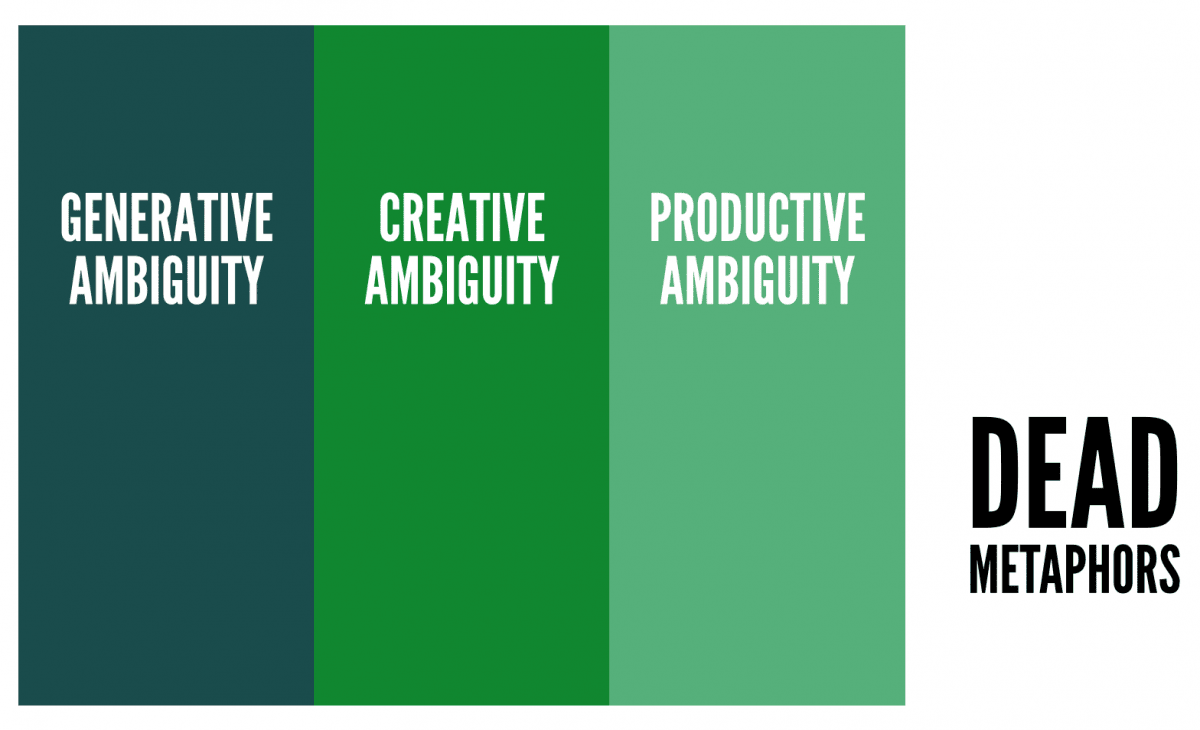
In the diagram above, this would mean approaches such as the following have the potential to become what philosopher Richard Rorty termed ‘dead metaphors’, no longer having any explanatory power:
- Messes (Russell Ackoff)
- Swamp (Donald Schön)
- Wicked problems (Horst Rittel)
- Resource dilemmas (Neils Röling)
- VUCA (volatility, uncertainty, complexity, and ambiguity)
When a term is “literalized into language” (Reynolds, 2009), for example with business jargon, it is no longer conceptually useful as it likes connotative power. I think about this a lot when reading systems thinking literature, as there seem to be a lot of different approaches and traditions which are, in one way or another, trying to hover around the realm of ‘productive ambiguity’.
For more on this, see On the strategic uses of ambiguity.
References
- Reynolds, A. (2009) ‘The Afterlife of Dead Metaphors: On Derrida’s Pragmatism / A sobrevida das metáforas mortas: sobre o pragmatismo de Derrida’, Revista de Letras, 49(2), pp. 181–195. Available at: https://www.jstor.org/stable/40542131 (Accessed: 3 May 2024).
- Reynolds, M. and Holwell, S. (eds) (2020) Systems approaches to making change: a practical guide, 2nd edn. Milton Keynes: The Open University/London: Springer.

